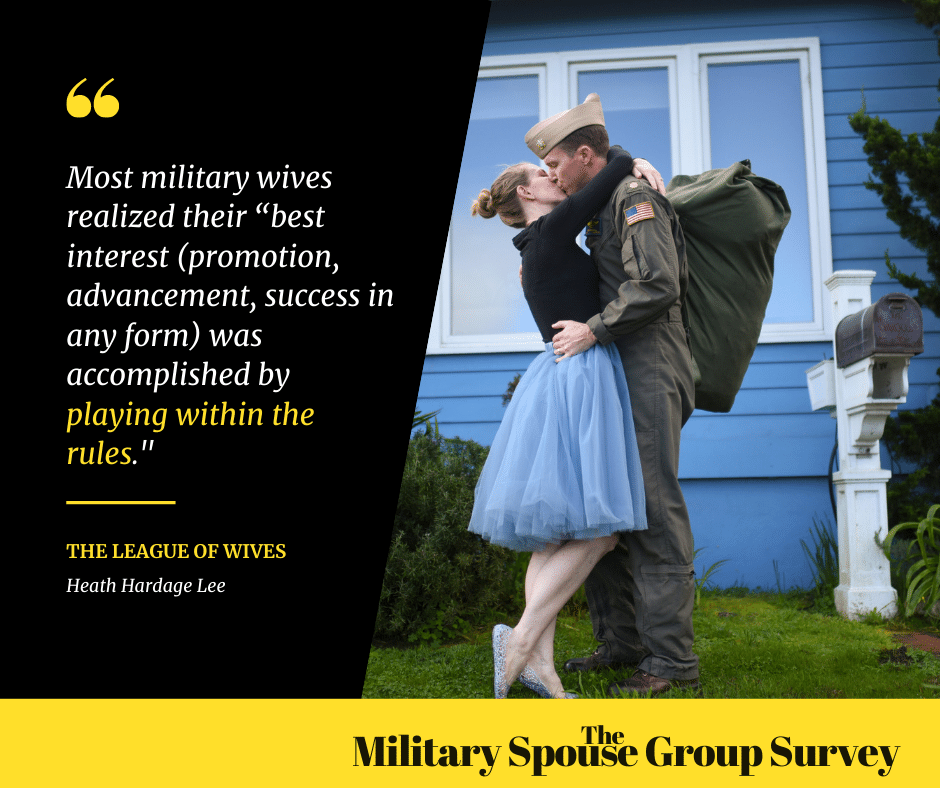Jennifer Barnhill Military Family Reporter and Researcher Chief Operating Officer, Partners in PROMISE
Data-informed storytelling is the key to solving the problems faced by military families. Reports are released featuring military spouse unemployment numbers, child care capacity data, and reports of substandard housing. But there is little data collected on how military spouses connect both to each other and the wide range of resources available to them.
These groups are often called spouse clubs, (Soldier and) Family Readiness Groups (S/FRGs), and Key Spouse programs and it is unclear how these branch level programs contribute to the overall success of the Military Family Readiness System.
“In interviewing federal officials tasked with monitoring military family readiness they did not have aggregated information on these groups,” said Jennifer Barnhill, the author of the independent Military Spouse Group Survey. “Instead, they pointed me to individual service branches.”
However, studies show that military spouses struggle with belonging regardless of service branch. And it is unclear how these groups fit into the larger picture of support. With the revival of Joining Forces, the question of military family support is ever present and proposed changes to programming must be accompanied by data.
The survey seeks to answer the following questions:
- Are military spouses more or less likely to turn to virtual friends for tangible needs?
- Are online-only groups replacing in-person command-level spouse groups?
- Is one branch’s military family support group “getting it right” while others are not?
- Do military spouses feel their contributions are valued by the DOD?
“As a military family reporter and nonprofit leader, I have seen that despite having countless resources at their disposal, families still have trouble connecting to them,” said Barnhill. “As a military spouse, when I hit a wall and can’t find the information I need, I ask my military spouse friends. But what if my friend is also new to that issue? When it feels like you are drowning in resources, how do we even know if we are asking the right questions?”
Just as the DOD is not in the business of “issuing” active-duty members families, they are not in the business of issuing friends to point families in the right direction to find information and resources. They have programming (S/FRG, community services, etc.) designed to build those relationships. This survey gives the military spouse community the opportunity to stop and examine how we connect to each other and how we connect to information, in order to see what is working and what is not.
“We don’t have to wait for the DOD to ask us. Let’s tell them. For instance, if the Army is getting it right, let’s learn from them,” said Barnhill “because at the end of the day connecting families to each other and available resources is what we all want.”
The Military Spouse Group Survey goes live on Military Spouse Appreciation Day (May 7th and will remain open until June 4, 2021). The survey, which takes 10 minutes to complete, can be taken anonymously and only summary data will be reported. This independently conducted survey is not affiliated with any nonprofit organizations or the DOD.
Take the Survey Today here.
### Bio: Jennifer Barnhill is a freelance writer with a focus on military family advocacy, Navy spouse of 15 years and mother of three. She is the Chief Operating Officer for Partners in PROMISE, where she spearheads their annual Military Special Education Survey. Jennifer serves as a Secure Families Initiative volunteer, National Military Spouse Network Day of Advocacy Steering Committee and the EFMP Coalition and is the military spouse liaison on The League of Wives Memorial Project. In addition to her volunteer work Jennifer is a UNC Master of Public Administration graduate student.


